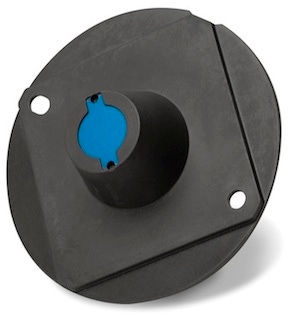March 7, 2011

Specialty polymer compounds are emerging as potential cost-saving solutions to new demands in health care design.
"We're seeing a shift to home healthcare in response to stronger emphasis on cost-effective alternative care," says Thomas O'Brien, global product marketing director, healthcare, Sabic Innovative Plastics.
One result is greater demand for shielding for electronic devices that provide wireless communication from home-based medical equipment to medical offices.
Specialty Compounds Challenge Metal in Medical_A |
O'Brien says that plastics compounded with stainless steel fibers offer an attractive design option for providing electromagnetic interference/radio frequency interference (EMI/RFI) shielding for housings.
Here's how five options for providing shielding for home health care equipment compare:
Conductive Compounds. Offers light weight and design flexibility, but it is also design sensitive. It's dependent on part thickness and there is limited shielding around apertures and joints.
Plating. Also offers light weight, but presents waste disposal issues and masking limitations.
Conductive spray coating. Also has masking limitations, and may not adhere well to plastics, but stacks up well on cost and weight.
Metallization. Also compares well on weight, but can be expensive because of the cost of tooling and fixtures.
Metal enclosures. This is the traditional approach, but is not attractive for home healthcare because of their weight and lack of design potential. Strengths include lower cost and excellent shielding effectiveness. Options include stamped sheet metal, foil wraps and die cast metals.
In an interview at MD&M West in Anaheim, CA, last month, O'Brien said that Sabic Innovative Plastics has used conductive compounds for shielding in mobile phones, and is now looking at applications in home healthcare.
The compounds, called Faradex, include 1-2 percent stainless steel fibers by volume. Plastics used in the compounds include polycarbonate, ABS, PC/ABS blends, polypropylene, polyacetal and polyamide 6.
Another specialty compound targeting health care is LNP Thermocomp HSG compounds made with tungsten fillers, which effectively block radiation and avoid "hot spots" that can occur with lead shielding.
Lead only costs about $1.20 per pound and has a big price advantage compared to a specialty compound. But lead is a restricted hazardous substance that has been temporarily exempted from medical devices. Some experts think that exemption could end in the next two years.
About the Author(s)
You May Also Like






